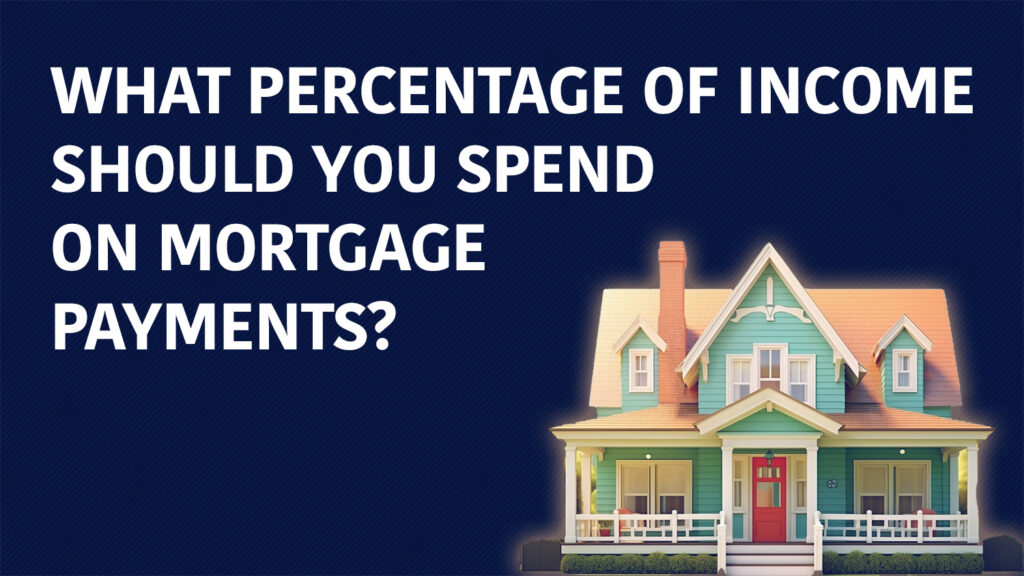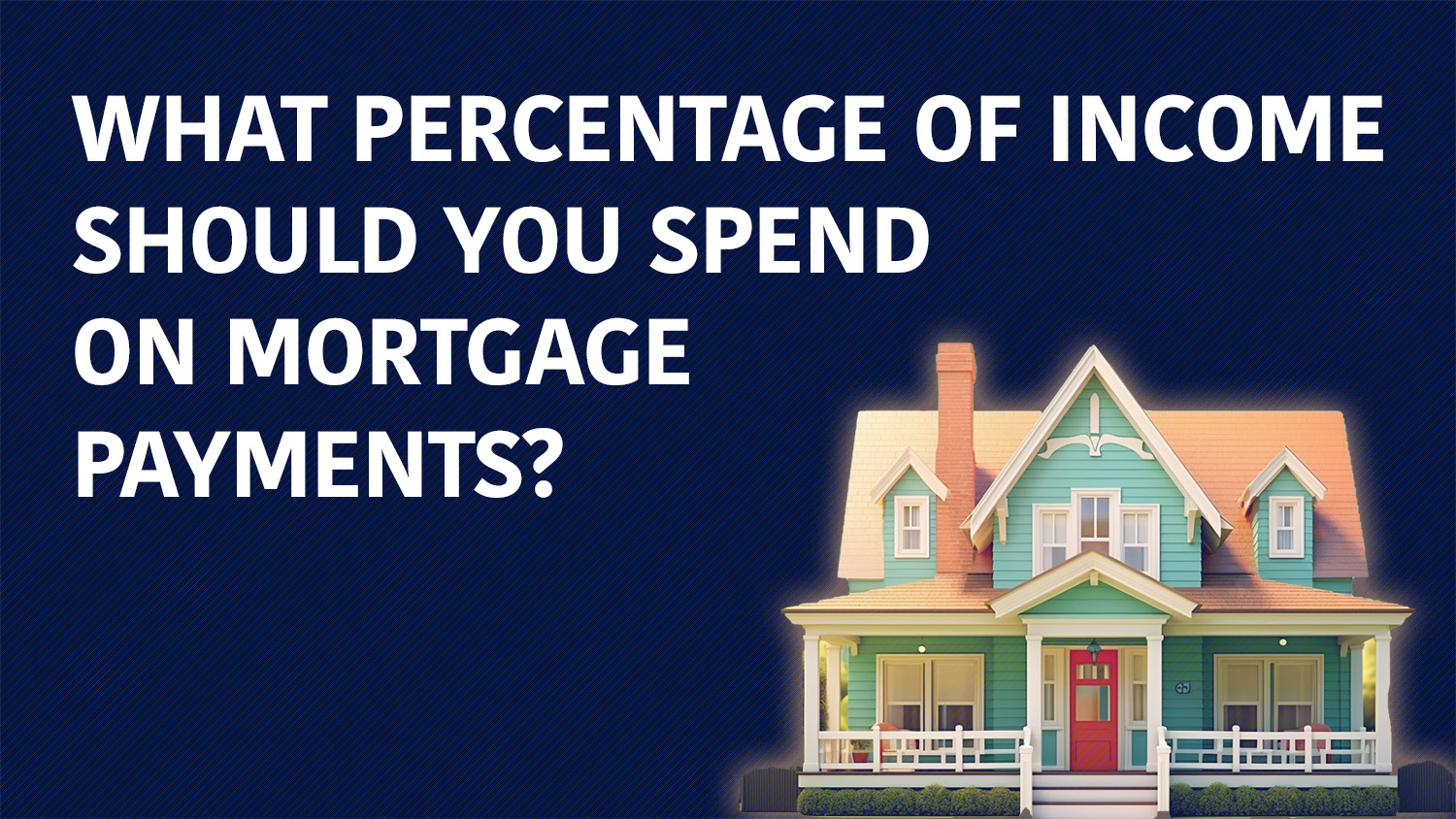 What percentage of income should go to a mortgage?
What percentage of income should go to a mortgage?
As a rule, you don’t want to spend more than one third of your gross monthly income on housing. That includes your mortgage payment, but also property taxes and private mortgage insurance (PMI).
For most of us, our monthly mortgage payment will always be the largest of our monthly costs. So, the more we spend on monthly mortgage payments, the less money we have less to spend on everything else.
The consequence of spending too much of your gross income on mortgage payments is being “house poor.” You may be living in a nice home (and building equity), but you have too little money left over to spend, save and invest.
» MORE: Mortgage pre-approval calculator
Well-known mortgage payment rules or methods
While spending a third of your gross income is a rough guide to how much mortgage payment is safe; there are a number of common ways to calculate a responsible mortgage to income ratio.
35% of gross income model
In an article on how the mortgage crash of the late 2000s changed the rules for first-time homebuyers, the New York Times reported:
“If you’re determined to be truly conservative, don’t spend more than about 35% of your pretax income on mortgage, property tax, and home insurance payments. Bank of America, which adheres to the guidelines that Fannie Mae and Freddie Mac set, will let your total debt (including student and other loans) hit 45% of your pretax income, but no more.”
I would hardly call 35% of your pretax income conservative, let alone ‘truly conservative.’
Let’s remember that even in the post-crisis lending world, mortgage lenders want to approve creditworthy borrowers for the largest mortgage possible. So when you obtain mortgage pre-approval, lenders will likely approve you for a loan amount with payments of up to 35% of your pretax income. That may tempt you to take on more home than you should. But don’t just assume that because the bank approved it, you can afford it. They are two very different things.
Remember: The more you spend on your home, the less you have available to save for everything else. You may be able to afford a housing payment that is 35% of your pretax income today, but what about when you have kids, buy a new car, or lose your job?
25% of post-tax income model
On the flip side, debt-despising Dave Ramsey wants your housing payment (including property taxes and PMI) to be no more than 25% of your after tax income (known as your net income).
“Your mortgage payment should not be more than 25% of your take-home pay and you should get a 15-year or less, fixed-rate mortgage … Now, you can probably qualify for a much larger loan than what 25% of your take-home pay would give you. But it’s really not wise to spend more on a house because then you will be what I call “house poor.” Too much of your income would be going out in payments, and it will put a strain on the rest of your budget so you wouldn’t be saving and paying cash for furniture, cars, and education.”
Notice that Ramsey says 25% of your after tax income while lenders are saying 35% of your pretax income. That’s a huge difference! Ramsey also recommends 15-year mortgages in a world where most buyers take 30-year mortgages. This is what I’d call conservative.
Another reader put it this way:
- Your mortgage payment should be equal to one week’s paycheck.
- Your mortgage payment plus all other debt should be no greater than two weeks’ paycheck.
That’s on the conservative side, too. One week’s paycheck is about 23% of your net income.
Not everybody is as debt-averse as Ramsey. And his one-size-fits-all advice might shut out a huge segment of Americans from ever realizing their homeownership dreams.
Good luck finding a mortgage in California that you can pay off over a 15-year term, with monthly payments at less than 25% of your after-tax income. That approach will be unrealistic in a number of regional American housing markets with high home prices.
If I had to set a rule, it would be this:
- Aim to keep your mortgage payment at or below 28% of your pretax monthly income.
- Keep your total debt payments at or below 40% of your pretax monthly income.
Note that 40% should be a maximum. I recommend striving to keep total debt to a third of your pretax income, or 33%.
As some commenters have pointed out, while it may be possible to buy a decent home in a small midwestern town for $150,000 (and well within these ratios), buyers in New York or San Francisco will need to spend five times that amount just to get a hole in the wall. Yes, people tend to earn more in these high-cost-of-living areas, but not that much more. Does it mean they shouldn’t buy a home? Not necessarily. They’ll simply have to make trade-offs to buy in those areas.
How to lower your monthly mortgage payment
Extend your mortgage term
Choosing a longer mortgage term spreads your loan balance over more total payments, reducing the amount of each payment individually.
But remember, extending your term comes at a cost, as you’ll ultimately pay more in cumulative interest over the life of your loan.
Make a bigger down payment
The bigger your down payment, the more equity you start off with in your home, and the lower your loan amount. A smaller loan = smaller monthly payments.
Plus, crossing the 20% down threshold means you don’t have to pay PMI, which will further reduce your combined housing costs.
Get a better interest rate
The interest rate a lender offers you affects your monthly mortgage payment amount. If you nab a lower rate, you’ll make a lower monthly payment. Your chances of getting a better interest rate might increase in a few different scenarios:
Average interest rates are quite high
Average mortgage interest rates vary substantially from year to year, and have at times varied by as much as 2% within a mere six-month period. Unfortunately, borrowing money is quite expensive right now, and mortgage rates are no exception.
Higher borrowing costs will reduce the total amount of house you can afford because more of your monthly mortgage payments will go toward interest, not the loan principal.
Getting a fixed-rate mortgage at a time when interest rates are low can keep your monthly payments low. When rates are high, however, an adjustable-rate mortgage, or ARM, may be attractive. With an ARM you could see your interest rate go down in the future. But you could also see your rate go up if rates keep rising.
Your credit score increases
One surefire way to score a better interest rate is to improve your credit score. If you haven’t applied for a mortgage yet and your score has room for improvement, it might be worthwhile to wait six months or so for your credit score to climb up before you go for the mortgage.
If you already have a mortgage and your credit score has improved significantly since you originally took out the loan, you might be able to refinance for a better rate.
» MORE: How much does a 1% difference in mortgage rate matter?
You shop around
There are oodles of options out there for mortgage lenders. Signing with your historical bank might give you the comfort and trust of familiarity, but it won’t necessarily give you the lowest rate you can find.
Always compare your bank’s offer with competing banks, credit unions, and reputable online lenders. Our partner, Mortgage Research Center, allows you to get personalized rate quotes from multiple mortgage lenders after answering just a few simple questions. It’s a great way to begin your mortgage search with no obligation.
Mortgage Research Center is the Internet's leading source for mortgage rates from dozens of lenders.
Answer a few questions to see your personalized mortgage rates in minutes.
- Purchase or refi
- Won't affect your credit
- Options for first-time buyers, VA and FHA loans
- Must provide your email address
Finding the right lender
As you shop for a lender, remember that every dollar counts. You’re committing to a monthly mortgage payment based on the rate you choose at the very start. Even small savings on your interest rate will add up over the years you’re in your house.
Take your time and shop and compare multiple rates and quotes. The amount of the loan, your down payment, state, mortgage product type, and your credit score will provide you with mortgage quotes from multiple lenders for comparison.
FAQs
What debt-to-income ratio is needed for a mortgage?
How much debt you have is a factor in how much you can afford to take on in mortgage payments.
Your debt-to-income ratio (DTI) will influence how a lender evaluates your loan application. Generally speaking, a lender won’t approve you for a mortgage if your DTI is above 43%.
Your mortgage lender will look at your total monthly debt — including credit card payments, car loans, student loans and personal loans. They want to see that the total of your monthly debt payments plus your new monthly mortgage payment does not exceed 43 percent of your income.
Personally, I advise you to hold off on a mortgage until your DTI is below 40% max. And a 33% DTI is an even better goal before applying for a mortgage. Going into a mortgage with a lower DTI gives you more financial breathing room in the event that unexpected expenses pop up.
Is 30% of my income too much for a mortgage?
Many people spend 30% of their gross monthly income on their mortgage payment. Most lenders will approve you for this much, or even a bit more. A good rule of thumb, however, is to keep your total housing payment — which includes your mortgage principal, interest, taxes and insurance — to no more than 28% of your monthly gross income.
How much will I pay with a Federal Housing Administration (FHA) loan?
FHA loans can make it easier to get a mortgage by reducing the down payment amount required. You can get an FHA loan with as little as 3.5% down. That’s a significant reduction over the large down payment that conventional mortgage loans require, typically 20%.
But the rules of how much income you can afford to spend on mortgage payments are the same with FHA loans. The thing to consider is that the smaller your down payment, the larger your mortgage loan will be. In other words, there are two ways to be able to afford more house: Make a larger down payment or borrow more money.
How can I eliminate private mortgage insurance?
Most lenders will remove the requirement to pay private mortgage insurance (PMI) when your loan-to-value ratio falls below 80%. For example, if you house is worth $200,000, you can stop paying PMI when your mortgage balance falls below $160,000, or 80% of the $200,000 value of your home.
Summary
Some financial gurus might say that the less of your income you devote to mortgage payments, the better. But taking an excessively conservative approach to mortgage payments might saddle you with a house or neighborhood that you’re unhappy with. On the other side of the spectrum, devoting too much of your income to your mortgage can put you in a financially vulnerable position, with little expendable income.
My broad guideline is to keep your monthly mortgage payment — including insurance and property taxes — at 28% of your pretax income. And try to keep your total debt payments, mortgage included, as close to 33% of your pretax income as possible.
There’s really no one-size-fits-all solution to mortgage budgeting. But you can start with my middle-ground approach and tailor it to align with your future financial goals and local housing market.


 What percentage of income should go to a mortgage?
What percentage of income should go to a mortgage?
